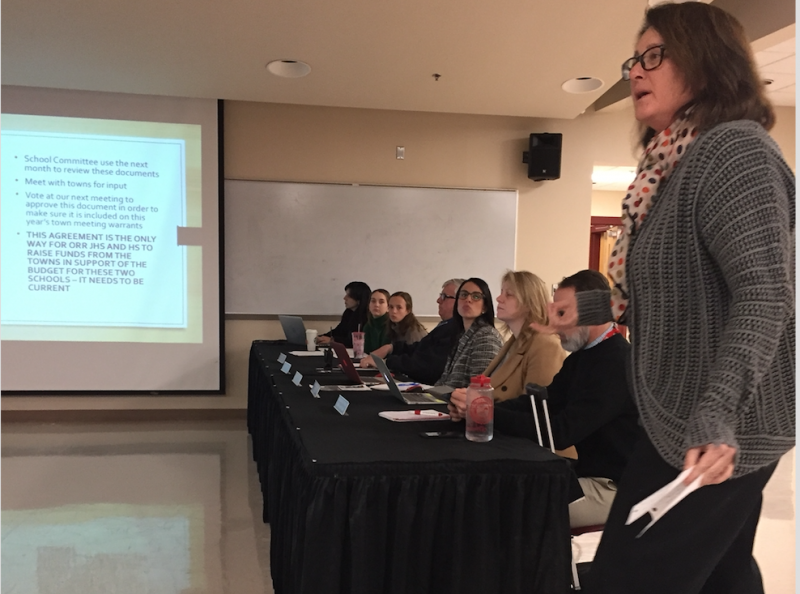School examines district agreement
A subcommittee of the Old Rochester Regional School Committee finished a two year review of the district agreement, presenting it to the full committee on Jan. 22. The school committee also heard recommendations on the district’s assessment from The Collins Center, an arm of the University of Massachusetts Boston that improves public management.
The school committee started studying the agreement, which created the school district and determines how towns pay for their students but has not been updated since 1986, at the request of the state, and because towns had asked for relief from large swings in town assessments from year to year.
On Jan. 22, Tina Rood and Heather Burke, members of the subcommittee, recommended a three year attendance average to set operating costs, and separate capital stabilization accounts to handle special renovation projects. They also recommended addressing smaller projects before costs increase.
A study by the Collins Center, funded by a Mattapoisett grant, dove into the town’s assessment numbers from 2012 to 2019 and looked at how the assessment works.
ORR enrollment is relatively stable, but small changes make a difference. What’s more, because enrollment is proportional, a school could have their assessment go up even though their enrollment is the same if the other towns send fewer students.
The increase in Mattapoisett’s assessment since 2016 is in part due to increasing transportation costs. But towns across the state also feel that they are paying too much, and the state providing too little. As Burke said, “you can’t demand more money from the state.”
The 2019 Student Opportunities Act looks to fix this imbalance. However, the funds from that act will be distributed over seven years. Old Rochester Regional got its funds for the first year from the state on Jan. 22, and will be awarded $36,000 — not enough to fix any major problem.
Some recommendations from the Collins Center included changing the assessment numbers to be based on 3 to 5 year averages, developing a stabilization fund for major projects (which is in the amended agreement), communicating more regularly with the towns, implementing a Capital Improvement Plan, and considering expansion to a K-12 regional school district.
School committee members disliked the concept of a K-12 district and said the district recently examined and dismissed the idea.
Burke explained using five year averages would help to cut the variation from year to year, but if a school has a spike in population, that would impact the average for longer.
She also pointed out that the school district needs to keep working on communication with the towns, but it is limited in what it can do to in each town once important documents are sent to Town Hall.
In the next month, the school district will meet with the towns for input and vote on the amended district agreement. After that, it will have to get the approval of 2/3 of voters at all three Town Meetings. If it does not, the school will begin the process over again.














